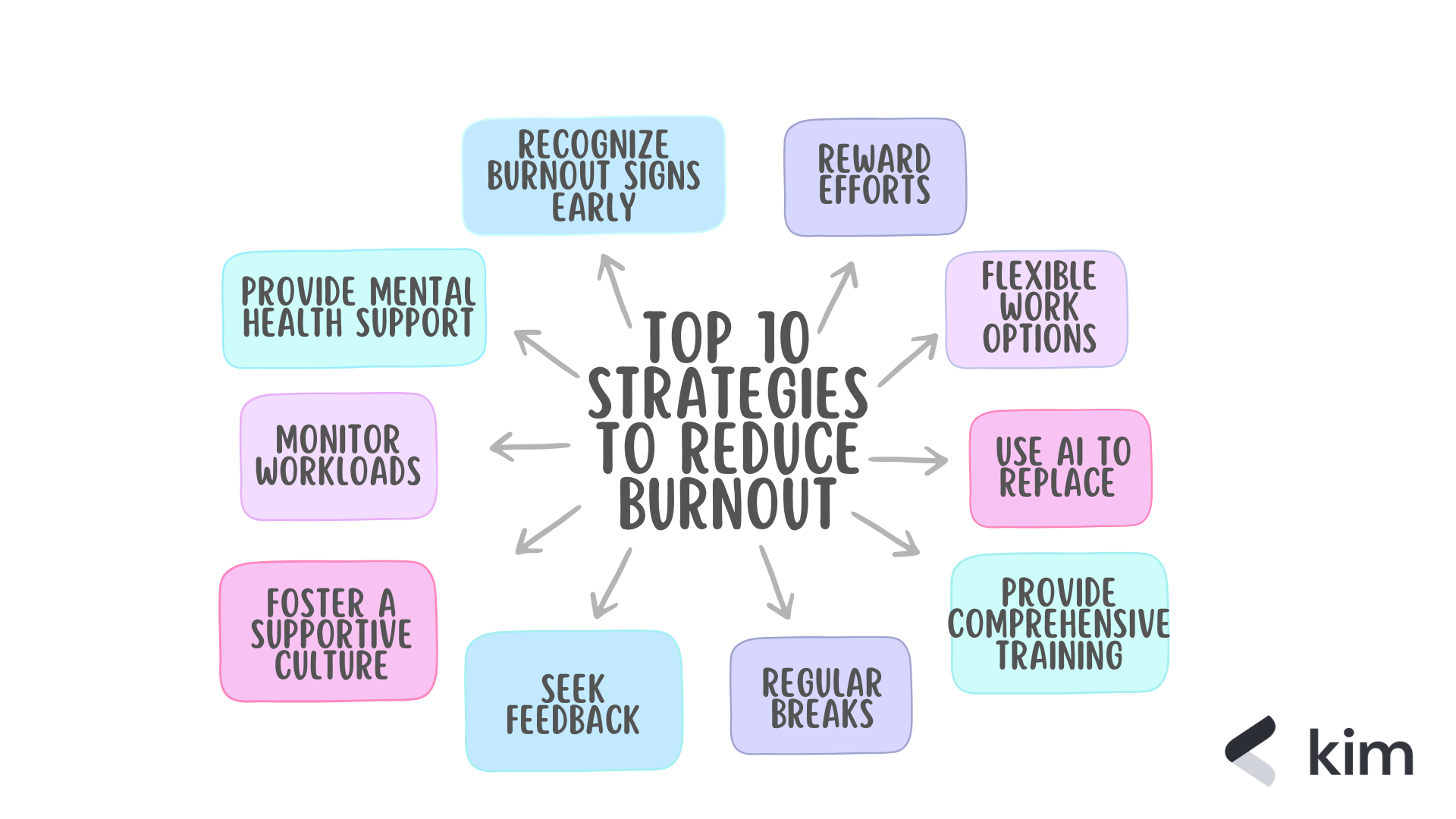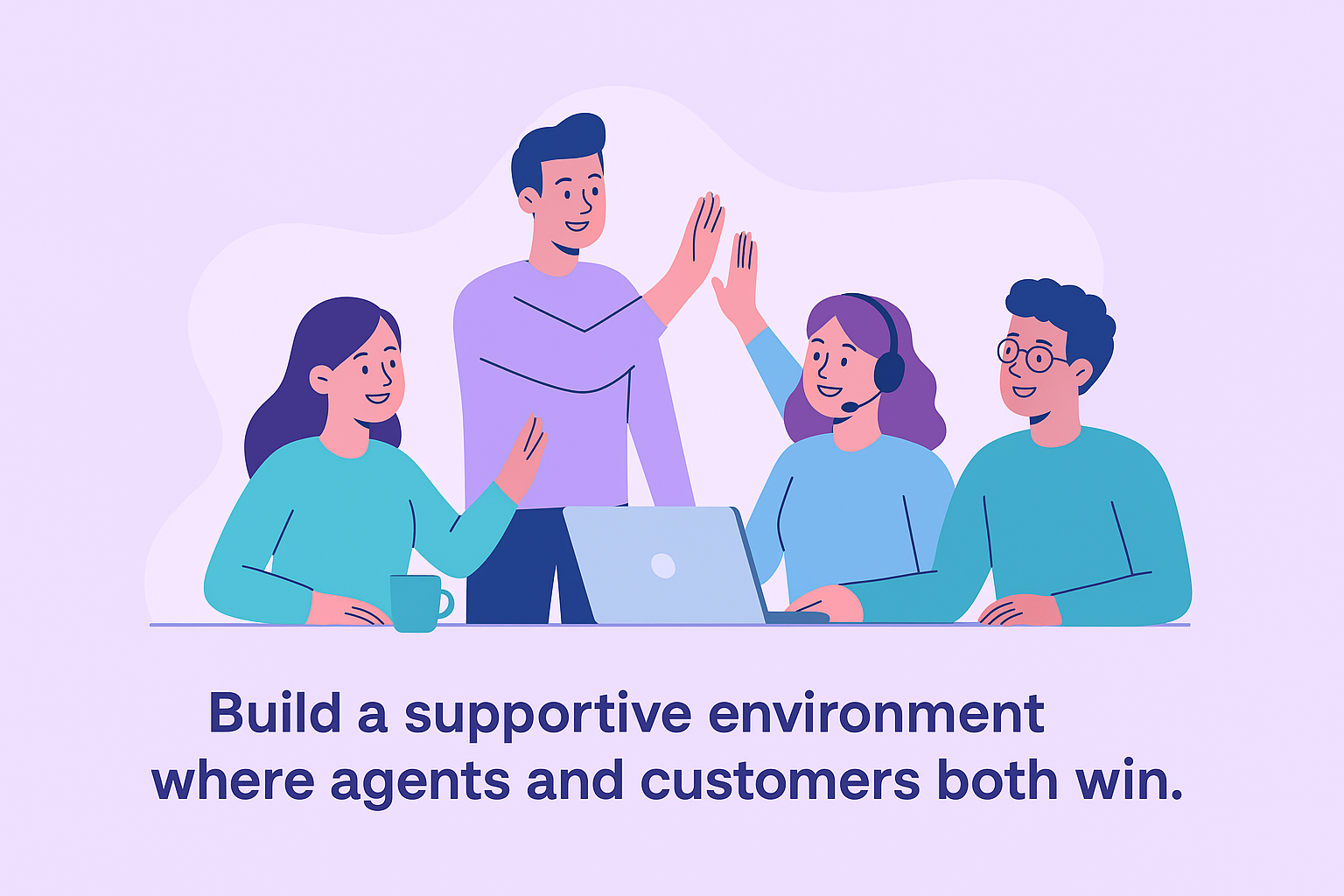Top 10 Strategies to Combat Customer Service Agent Burnout in 2025

Imagine starting your day in a bustling customer service center, logging into your dashboard to see dozens of pending queries, each one urgent, some frustrated, some confused. By mid-morning, your energy is already waning, and by the end of your shift, the mental exhaustion is palpable. For many customer service agents in 2025, this scenario isn’t rare, it’s the daily grind. And the consequences are serious: a 2025 study found that 66% of employees report job burnout, particularly in high-demand customer service roles.
Burnout doesn’t just affect employees; it directly impacts customer satisfaction, brand loyalty, and overall business performance. Companies that fail to address agent fatigue risk higher turnover, lower productivity, and dissatisfied customers. For anyone managing customer service teams, understanding and combatting burnout isn’t optional, it’s essential.
In this blog, we explore top 10 strategies to reduce burnout, supported by real-world examples and actionable advice that managers can implement immediately.

1. Recognize Burnout Signs Early
Burnout doesn’t appear overnight, it creeps up quietly. As a manager, noticing the early signs can save a lot of trouble down the line.
Key signals to watch for:
- Emotional exhaustion: Agents feel drained and overwhelmed.
- Detachment: Agents seem disconnected from customers or colleagues.
- Reduced motivation: Tasks feel meaningless or pointless.
Actionable steps:
- Have quick weekly check-ins or short pulse surveys.
- Encourage open conversations where agents can share struggles without judgment.
- Keep an eye on patterns: frequent errors or complaints about workload can be a red flag.
The earlier you recognize burnout, the easier it is to address before it spirals.
2. Make Training Count
Agents who feel confident in their skills are less likely to burn out. Training isn’t just about product knowledge, it’s about preparing for the real pressures of the role.
Focus areas:
- Deep understanding of the products or services.
- Emotional intelligence to handle tricky conversations.
- Stress management techniques for high-pressure moments.
Practical tip: Break training into bite-sized modules and refresh them regularly. Encourage agents to practice through roleplay or peer mentoring, it helps them feel ready, not overwhelmed.
3. Use Technology Wisely
AI and customer service software can be lifesavers if used correctly. But the goal is support, not replacement.
Ways tech helps:
- Automating repetitive tasks like ticket routing.
- Suggesting responses for common questions.
- Monitoring workloads to spot pressure points.
Actionable tip: Choose solutions that integrate smoothly with your workflow. The point is to reduce mental load, not create new stress.
Some travel platforms use AI to filter routine inquiries, leaving agents to handle more meaningful conversations. It’s less stressful and keeps work engaging.
4. Offer Flexibility
Remote work is convenient, but it can also be isolating. Research in 2025 shows fully remote agents sometimes feel more stressed than hybrid teams. Flexibility matters, both in where and when people work.
Best practices:
- Hybrid options where agents can choose office or home.
- Flexible hours aligned with personal productivity.
- Mental health days or wellness breaks when needed.
Tip: Use scheduling tools to balance personal preferences with business needs. Feeling in control of their schedule can reduce agent stress dramatically.
5. Build a Supportive Culture
Culture makes a huge difference. Agents who feel valued and heard are more resilient to stress.
Core elements:
- Recognize achievements, big or small.
- Mentorship to guide new team members.
- Open communication channels for feedback and ideas.
Tip: Encourage managers to model empathy. When asking for help is normalized, agents feel safe sharing challenges instead of letting stress build silently.
6. Balance Workloads
High workloads are a primary burnout driver. Agents juggling unrealistic quotas or unpredictable spikes in demand are at higher risk.
Strategies:
- Use analytics to forecast busy periods.
- Cross-train agents so tasks can be rotated evenly.
- Monitor real-time dashboards to adjust workloads dynamically.
Tip: Even small tweaks, like shifting a few tickets or rotating tasks, can prevent monotony and fatigue.
7. Support Mental Health
Burnout isn’t just a workload issue, it’s a mental health concern. Stress, anxiety, and long hours take a toll.
Ways to support:
- Offer counseling or employee assistance programs.
- Provide wellness initiatives like meditation, yoga, or fitness challenges.
- Encourage work-life boundaries and disconnecting after hours.
Mental health support doesn’t have to be formal, sometimes a casual mindfulness session or peer check-in is enough to make agents feel cared for.
8. Recognize and Reward Efforts
Feeling appreciated can significantly reduce burnout. Recognition doesn’t have to be cash rewards, it’s often more effective when it’s timely and genuine.
Approaches:
- Celebrate wins during team meetings.
- Use internal newsletters or dashboards to highlight achievements.
- Mix public and private recognition to make everyone feel valued.
Tip: Recognition isn’t just motivation, it’s a reminder that their work matters, which is critical for long-term engagement.
9. Encourage Regular Breaks
Constant work without rest is a burnout accelerator. Short, intentional breaks can restore focus and energy.
Ideas:
- Move or stretch every 2–3 hours.
- Practice mindfulness or deep-breathing exercises.
- Step away from the desk to recharge mentally.
Tip: Integrate gentle break reminders into software tools so agents don’t have to think about it, they just step away naturally.
10. Listen and Improve
Preventing burnout isn’t a one-off effort, it’s ongoing. Agents’ insights are the best guide for making meaningful changes.
How to act on feedback:
- Conduct surveys or polls on stress, workload, and satisfaction.
- Organize small focus groups to identify recurring issues.
- Act quickly on actionable suggestions to show that input matters.
Tip: When agents see changes happening because of their feedback, trust grows, and stress decreases naturally.
Conclusion
Customer service agent burnout in 2025 is a serious, widespread issue. The solution isn’t just about reducing workload or automating tasks, it’s about creating a comprehensive, supportive environment where agents feel equipped, valued, and empowered.
By Recognizing early signs, Recognizing the efforts of your agents, and ensuring you offer them flexible work options if needed any businesses including yours can significantly reduce burnout while boosting agent productivity and satisfaction.
A happy agent leads to a happy customer. With AI help desk solutions and supportive tools, teams can manage workload efficiently, resolve issues effectively, and maintain agent well-being.
Create a customer service environment where agents thrive, and every interaction leaves a positive impact!!
